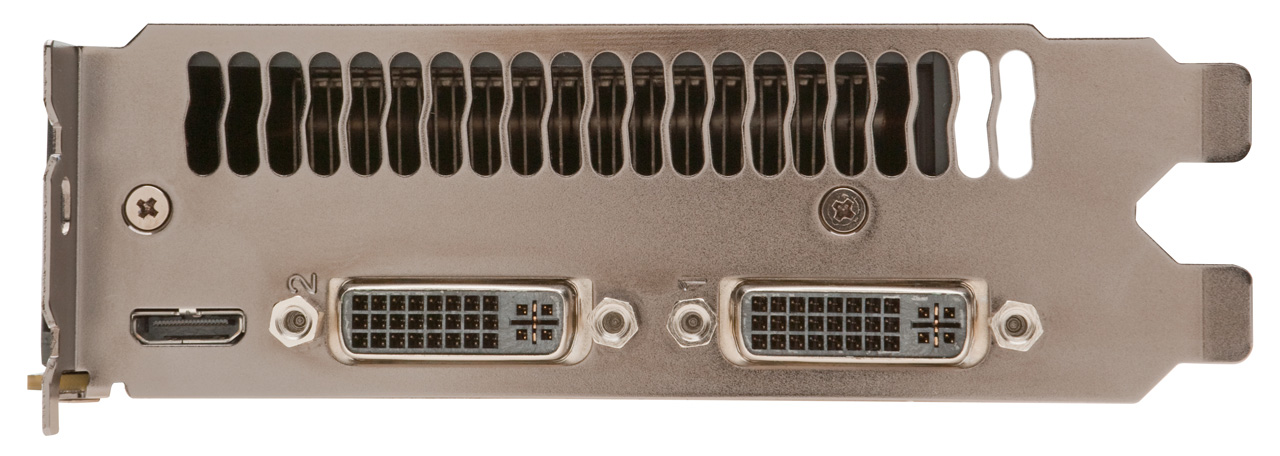GeForce GTX 480 And 470: From Fermi And GF100 To Actual Cards!
Nvidia Surround, Display Output, And Video
For those who’ve come to know and love AMD’s Eyefinity technology, Nvidia Surround is a bittersweet effort.
On one hand, the launch of GeForce GTX 480 means that Nvidia, like AMD, is pushing enough graphics horsepower from a single-GPU card that gaming at 2560x1600 isn’t necessarily taxing. Thus, the company is enabling (via software) the ability to span games across three displays, akin to Eyefinity.
The good news here is that Nvidia Surround supports bezel correction so that display bezels function more like window frames and less like jarring interruptions between continuous objects on-screen. It also works on older GeForce GTX 200-series graphics cards—so anyone rocking an SLI-based configuration of, say, GTX 280s could conceivably take advantage.
The bad news is that GF100- and GT200-based graphics cards are limited to two independent display outputs each. Attaching three monitors requires two cards. Comparatively, AMD’s support for three (and soon to be six) LCDs from a single board is vastly superior. Granted, the number of people with three-monitor desktops is small, but I’m included in that minority, so it’s all the more relevant to me.
To Nvidia’s credit, it plans to go one step further by enabling stereoscopic mode across three displays—and it’ll be the only game in town for anyone willing to throw down for three new 120 Hz LCDs, two graphics cards, and a $200 GeForce 3D Vision kit. Expensive? Yes. Potentially very cool? Also yes. 3D Vision Surround support is not yet part of the GeForce 197 driver. Rather, it’s expected to emerge in the 256.xx release sometime next month, and we’ll need to follow up once the feature can be tested.
Display Output
As you likely surmised from the preceding discussion, GF100 proffers two display pipelines, which are integrated into the GPU (unlike last-generation’s cards, which employed the NVIO companion chip). Both the GeForce GTX 480 and GeForce GTX 470 include two dual-link DVI outputs and a mini-HDMI connector, two of which can be used at any given time.
Get Tom's Hardware's best news and in-depth reviews, straight to your inbox.
This connectivity suite isn’t particularly unexpected given then prevalence of DVI and the two-output ceiling common to every card outside of the Radeon HD 5000-series. AMD’s emphasis on DisplayPort is driven predominantly by the way Eyefinity enables its three-plus outputs.
Video And GF100 In Your HTPC
With everyone focusing on compute and gaming performance, there’s been little attention paid to GF100’s A/V capabilities. Naturally, nobody is going to want a GeForce GTX 480 or 470 in a home theater PC. But what about the derivative cards sure to follow?
GF100 employs the VP4 engine introduced back in October of last year with the mainstream GeForce GT 220 cards. VP4 adds support for MPEG-4 ASP (Advanced Simple Profile) acceleration, in addition to the MPEG-2, VC-1, and H.264 codecs offloaded by VP3.
Moreover, it’s no longer necessary to use an S/PDIF cable to enable HDMI audio input. GF100 (like the GT 220 and GT 240) supports HDMI audio over PCI Express, enabling multi-channel LPCM. TrueHD and DTS-HD Master Audio cannot be bitstreamed, as they can with AMD’s Radeon HD 5000-series and Intel’s Clarkdale-based Core i3/Core i5 CPUs. You can’t get lossless audio out of a GF100-based card, but again, that probably won’t matter in any way until the Fermi architecture is miniaturized in a big way.
Current page: Nvidia Surround, Display Output, And Video
Prev Page Tessellation And Anti-Aliasing Next Page Test Setup And Benchmarks-
restatement3dofted I have been waiting for this review since freaking January. Tom's Hardware, I love you.Reply
With official reviews available, the GTX 480 certainly doesn't seem like the rampaging ATI-killer they boasted it would be, especially six months after ATI started rolling out 5xxx cards. Now I suppose I'll just cross my fingers that this causes prices for the 5xxx cards to shift a bit (a guy can dream, can't he?), and wait to see what ATI rolls out next. Unless something drastic happens, I don't see myself choosing a GF100 card over an ATI alternative, at least not for this generation of GPUs. -
tipoo Completely unimpressed. 6 months late. Too expensive. Power hog. Performance not particularly impressive. The Radeon 5k series has been delivering a near identical experience for 6 months now, at a lower price.Reply
-
tpi2007 hmmm.. so this is a paper launch... six months after and they do a paper launch on a friday evening, after the stock exchange has closed.. smart move by Nvidia, that way people will cool off during the weekend, but I think their stocks won't perform that brilliantly on monday...Reply -
Godhatesusall high power consumption, high prices along with a (small, all things considered) performance edge over ATI is all there is. Are 100$ more for a gtx 480 really worth 5-10% increase in performance?Reply
Though the big downside of fermi are temps. 97 is a very large(and totally unacceptable) temperature level. IMO fermi cards will start dying from thermal death some months from now.
I just wanted competition,so that prices would be lower and we(the consumers) could get more bang for our buck. Surely fermi doesnt help alot in that direction(a modest 30$ cut for 5870 and 5850 from ATI and fermi wont stand a chance). It seems AMD/ATI clearly won this round -
Pei-chen Wow, it seems Nvidia actually went ahead and designed a DX11 card and found out how difficult it is to design. ATI/AMD just slapped a DX11 sticker on their DX10 card and sells it as DX11. In half a year HD 5000 will be so outdated that all it can play is DX10 games.Reply -
outlw6669 Kinda impressed :/Reply
The minimum frame rates are quite nice at least...
Lets talk again when a version with the full 512 SP is released.

